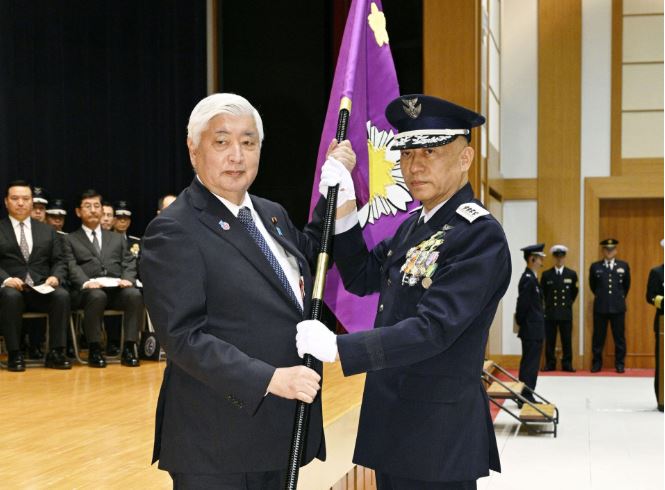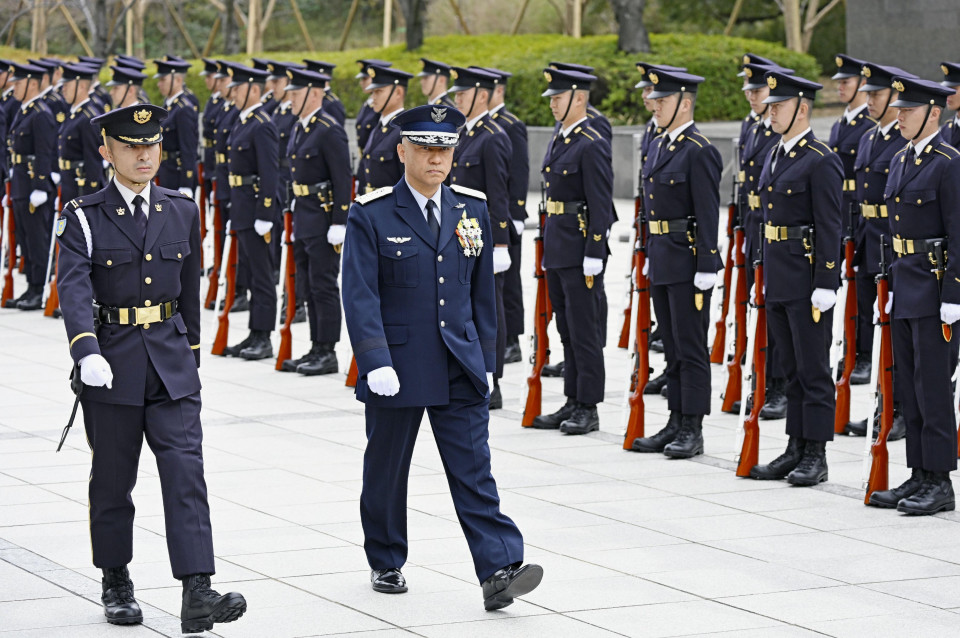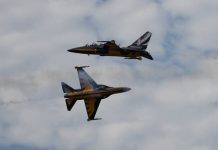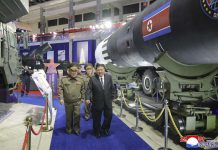
TOKYO – Japan on Monday launched a new command for the Self-Defense Forces to better integrate its ground, maritime and air defenses, in a major revamp aimed at ensuring smoother coordination with the U.S. military at a time when tensions are heightened over potential contingencies involving Taiwan.
The SDF Joint Operations Command was established at the Defense Ministry in Tokyo with about 240 personnel. Gen. Kenichiro Nagumo, who has deep expertise in SDF joint operations, leads the permanent body.
The move is part of Japan’s ongoing efforts to significantly beef up its defense capabilities amid a deteriorating regional security environment, with China increasing its assertiveness, particularly toward self-ruled Taiwan, and North Korea continuing its nuclear and missile buildup.
Prior to the change, the top uniformed officer in the SDF — the chief of staff of the Joint Staff — was responsible for joint operations in which the Ground Self-Defense Force, Maritime Self-Defense Force, and Air Self-Defense Force operated in unison.
However, the chief of staff was also tasked with offering expert advice to the defense minister on SDF operations. The 2011 earthquake and tsunami disaster, which also triggered a nuclear power plant accident, demonstrated that the chief of staff’s workload could be unmanageable in cases of large-scale emergencies.
The new structure will allow the chief of the Joint Staff to focus on supporting the defense minister, while the new joint headquarters will centrally command GSDF, MSDF and ASDF units across Japan to improve the effectiveness of joint operations and enable prompt response and decision-making, according to the Defense Ministry.

Gen. Kenichiro Nagumo, head of the Self-Defense Forces’ new Joint Operations Command, receives a guard of honor at the Defense Ministry in Tokyo on March 24, 2025.
The head of the Joint Operations Command, to use the acronym JJOC, is given broad authority at times of contingencies ranging from force allocation to leading operations, including cross-domain activities that may also involve outer space and cyberspace.
As a counterpart to the new SDF command, the United States announced last year that it will reconstitute U.S. Forces Japan into a joint force headquarters and take on more operational responsibilities amid concerns over the limited role of the USFJ in dealing with contingencies in the region.
While the two countries seek to modernize their decades-old alliance through upgraded command and control frameworks, concerns remain in Japan that closer alignment could lead the SDF to be placed under the U.S. military command in the event of an emergency.
Taiwan is viewed as a potential military flashpoint that could draw the United States into conflict with China, an eventuality that would pose serious security challenges for Japan given the proximity of its remote southwestern islands, including the Tokyo-controlled, Beijing-claimed Senkaku Islands in the East China Sea.
BY: The Times Union – KYODO






